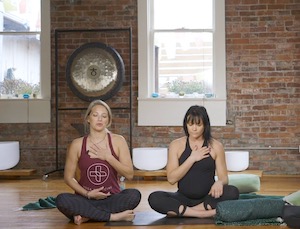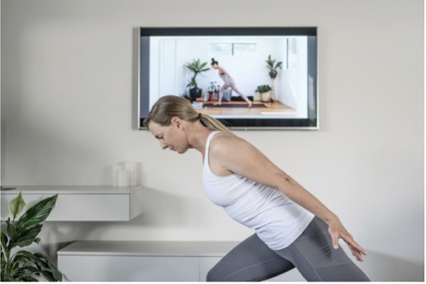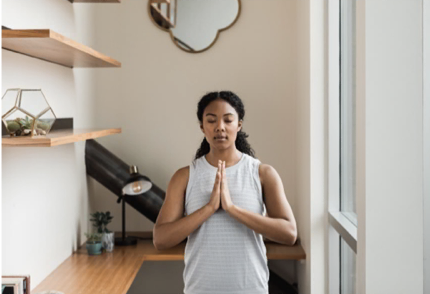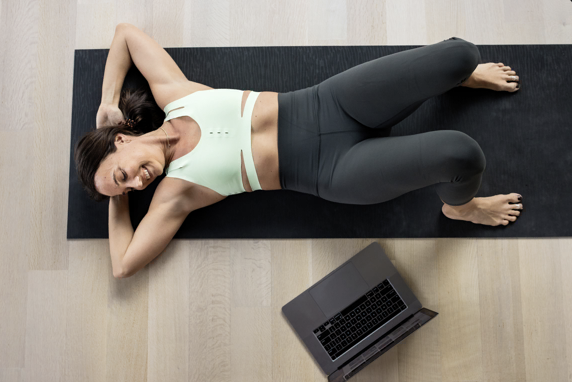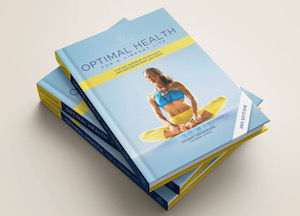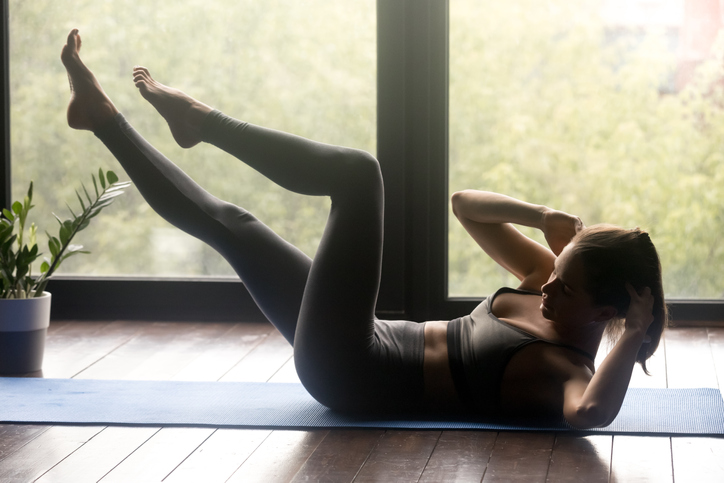Anatomy, Articles, In the Press, Resources, Yoga Medicine® News
Everything You Need to Know Training with Diastasis Recti
By Bethann Mayer for Stylist Magazine.
Lifting heavy has so many benefits: we feel stronger, we move easier and we’re more functionally fit – meaning that we have both better balance and flexibility. But sometimes, strength training can go too far, and one injury worth keeping an eye out for is a condition called “diastasis recti”.
While it’s more common post-childbirth, it’s something that can happen to those of us who lift heavy or do lots of core work. Diastasis recti is the partial or complete separation of the rectus abdominis (or six-pack) muscle, which can leave the midline looking soft rather than tight – regardless of exercise or diet. “The midline tissue can become stressed if it’s being put under a lot of pressure,” says Emily Gilliland, a Surrey-based health personal trainer who specialises in working with pregnant and postnatal women.
Of course, this issue isn’t necessarily an aesthetic one. Many of us work out to feel good, not to look a certain way, and this issue can impact how well we move going forward. “A lot of people talk about it being a cosmetic thing, but it’s so much more than that,” says Dr Leah Deutsch, an obstetric doctor and prenatal yoga teacher with Yoga Medicine®. “It’s a functional issue.”
It’s worth flagging that diastasis recti isn’t the same thing as a hernia, although both can be caused by lifting too much, too soon. Hernias happen when an internal part of the body pushes through a weakness in the muscle or surrounding tissue wall (usually between your chest and hips), often resulting in a lump in the abdomen or groin. Diastasis recti, on the other hand, is a separation of the muscles in the abdomen area.
Poor posture, constipation, lower back pain, and pelvic floor dysfunction are all potential side effects of the injury – so if you’re experiencing any of those symptoms after a few months of intense strength training (or after giving birth), it’s worth getting professionally checked out. If you do have diastasis, there are ways to gradually reduce the gap and get back to doing the exercises that make you feel powerful, but it requires planning and expert guidance.
Here are six tips for building back stronger after a core trauma:
Do: Get the Right Diagnosis
You can do a really simple check to see whether you have diastasis or not:
- Lie on your back
- Press two fingers into your stomach below and above the belly button, lifting your head off the ground (as if you’re doing a mini-crunch)
People with diastasis recti tend to have a gap between their ab muscles that’s more than two finger-widths apart. If you feel a gap and you’ve been experiencing lower back pain or pelvic floor and pee problems, talk to your GP. If you’ve recently had a baby, bring up the issue during your six-week postnatal review.
“Some GPs may be better at (diagnosing) this than others,” Dr. Deutsch says. “If you feel that you haven’t been checked properly, a women’s health physiotherapist is a really good place to go for a comprehensive diagnosis.” A physio will be able to assess your pelvic floor, back and posture to rule out any other possible issues.
Do: Breathe Deeply
People often think that building strong stomach muscles is done through a protein-rich diet and core-focussed exercise, but breathing is the foundational block for fixing diastasis recti. “There’s a breathing pattern we want to practice,” Emily explains. “On your inhale, allow the air to fill you up. On the exhale, make sure that the pelvic floor and the core work together, pulling up from the pelvic floor.” This breathing pattern engages the abdominals without placing them under too much pressure and is best practiced every day – not just when you’re in a yoga class.
Conscious breathing has many benefits that go beyond repairing muscles but if you can’t stand the thought of concentrating on breathing alone, go for other mindful practices that incorporate breathing. As Dr Deutsch says: “Doing yoga can be great for tuning into and having awareness of the breath.”
Don’t: Put Too Much Pressure on Your Abs
You may be eager to work your mid-line but with this kind of injury, you need to avoid doing ab workouts for a while. “Don’t have a go at anything that will put undue pressure on the abs to start with,” Emily says. “When you do things like crunches and sit-ups, you are squashing the front part of the abdominal wall and that can encourage it to dome. We don’t want that.”
Anyone with diastasis should also avoid doing full planks. When you’re able to begin working these types of exercises back into your routine will depend on the speed of your recovery and that’s something you’ll need to discuss with a physiotherapist. You want to resume core workouts when you’re confident that your stomach is strong enough to deal with them.
Do: Lower Body Exercises
Our core muscles are key for controlling just about every part of our bodies, but they’re particularly important for lower body movement. Working on your glutes, lower back, quads and hamstrings is the perfect way to work the core without putting too much pressure on an already stressed area. “What people often don’t know is that by doing glute work, you’re stabilising your pelvis,” says Sam Hull, a PT specialising in pre-and postnatal wellbeing and fitness.
Your pelvis sits at the base of your core and stabilising it will help you to do more effective core work in the future. A stable pelvis also helps to improve your posture and reduce back pain – win, win! So, what lower body exercises work that deep core?
Squats (12 reps x 3)
Standing with feet shoulder-width apart, bend the knees as if you’re about to sit in a chair. When your quads are parallel to the floor, hold the position and come back to standing – squeezing your glutes when you get there. Go down for a count of three and come up for a count of one.
Clams (15 reps each side)
Lie on your right side. Bend your right elbow and rest your head on your hand. Stack your legs on top of each other, bending your knees to be at a 45° angle. Keeping your heels together and without moving the pelvis or lower leg, raise your upper knee. Pull the belly button towards your spine, Squeeze your glutes, close your knees and then switch sides.
Toe Taps (15 reps each side)
Lie on your back with your lower back flat on the floor. Bring the legs up to a 90° angle and one leg at a time, extend to tap the floor with your toes – keeping the back flat on the floor. Return to the tabletop position and repeat on the other side.
Do: Engage the Core Every Day
Most of us are busy (even when we’re working from home) so it’s unrealistic to assume that anyone has the time to do 50 clams a day and half an hour of breathing practice. However, there are plenty of ways to activate your core activation without adding yet another thing to your to-do list. Emily suggests turning everyday activities into opportunities for core activation, like picking up your dog and squatting with it, breathing as you have a shower or doing a few toe taps when first getting into bed.
Don’t: Go Too Hard, Too Soon
When exercise plays a big part in your life, waiting for injuries to heal can be torturous – you want to get back to training ASAP. As with other kinds of issues, diastasis doesn’t heal immediately and it can take a while before you start to move as you once did. Whatever you do get going, don’t rush back into lifting heavy and smashing out the core workouts. Trust in the process, take it easy and talk to a physio about a recovery plan. “It’s about working with your own body,” Leah says. “If you are feeling pain or seeing doming when you exercise, it may be that you are not ready. It’s about building gradually.”




